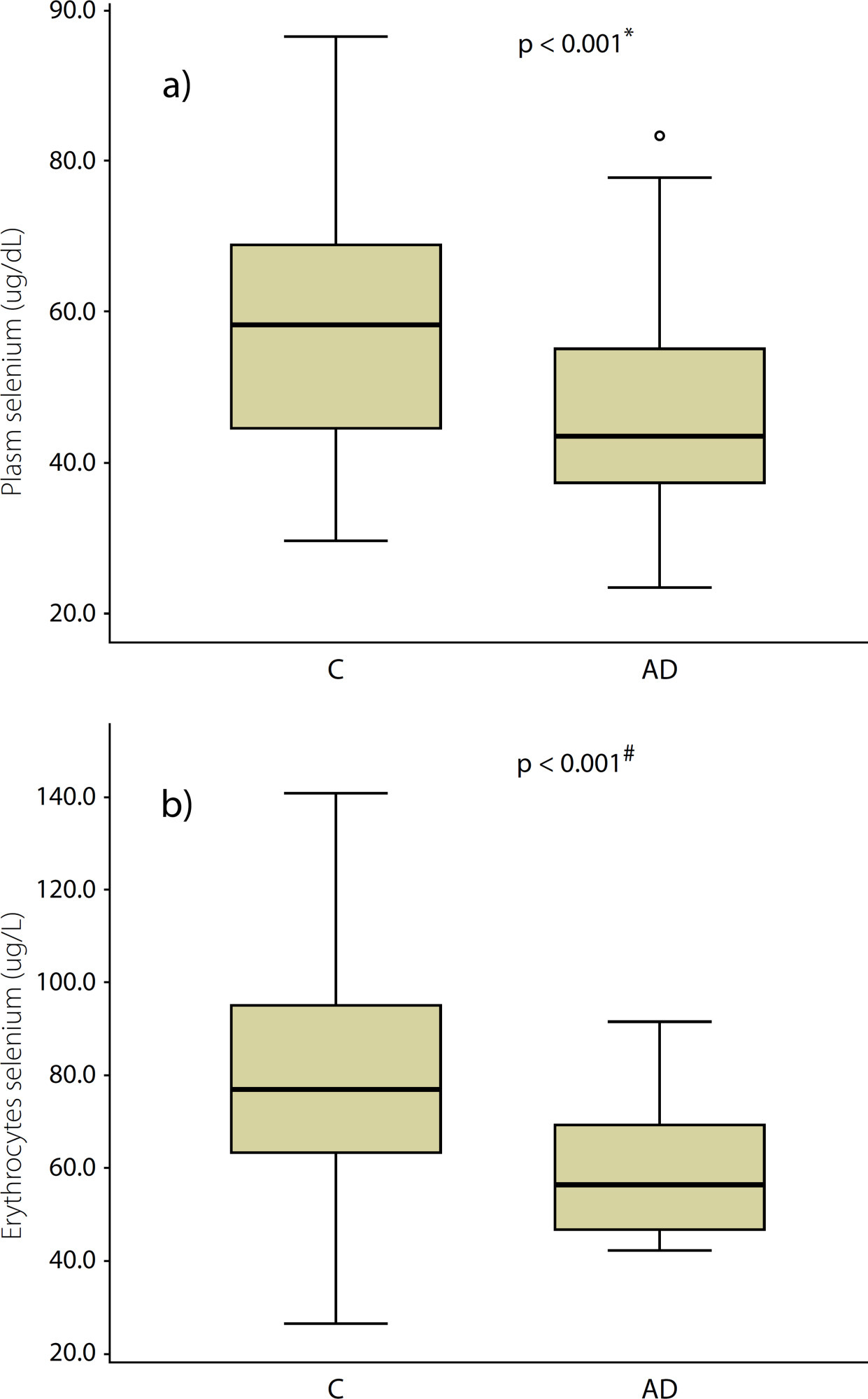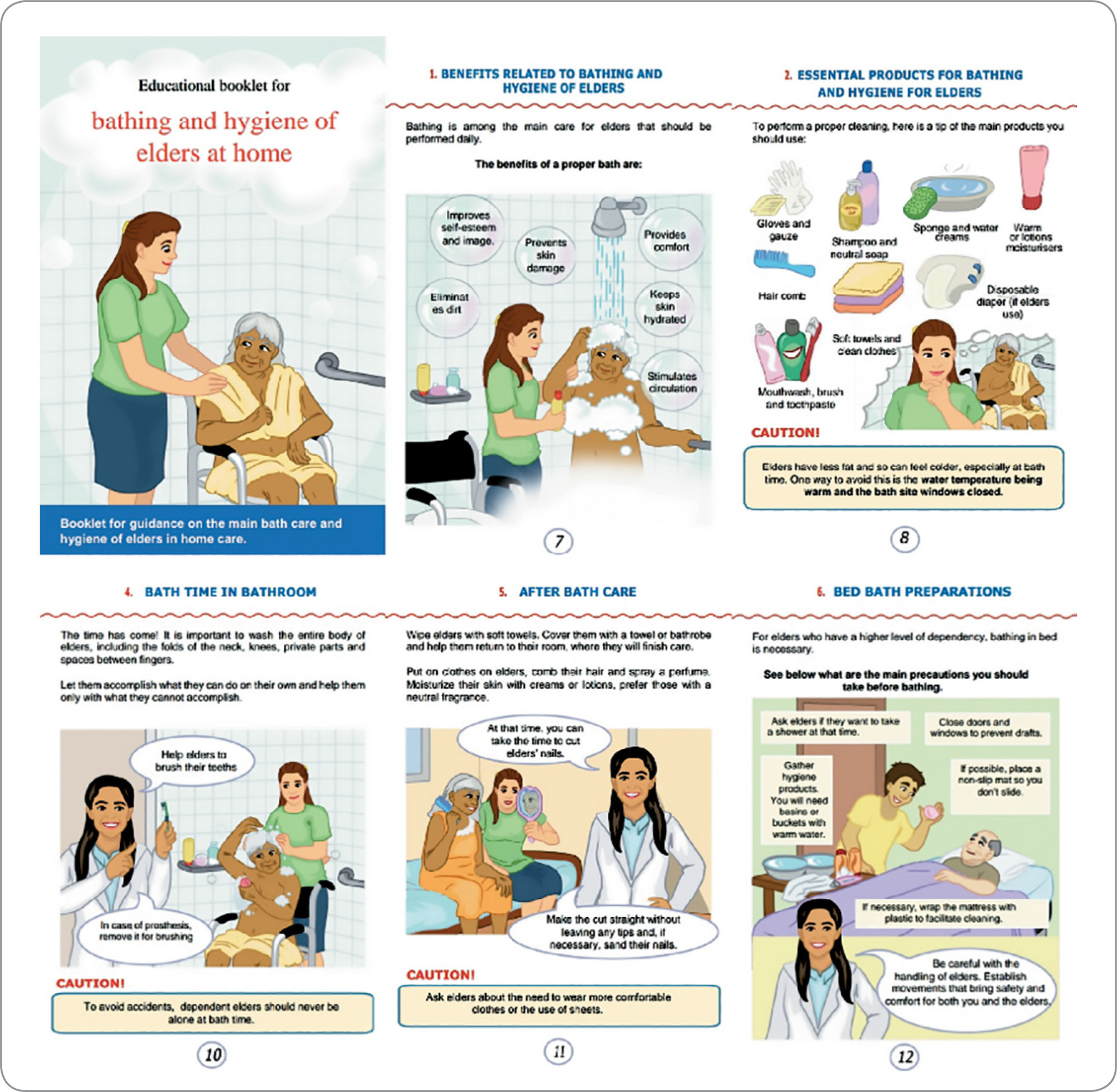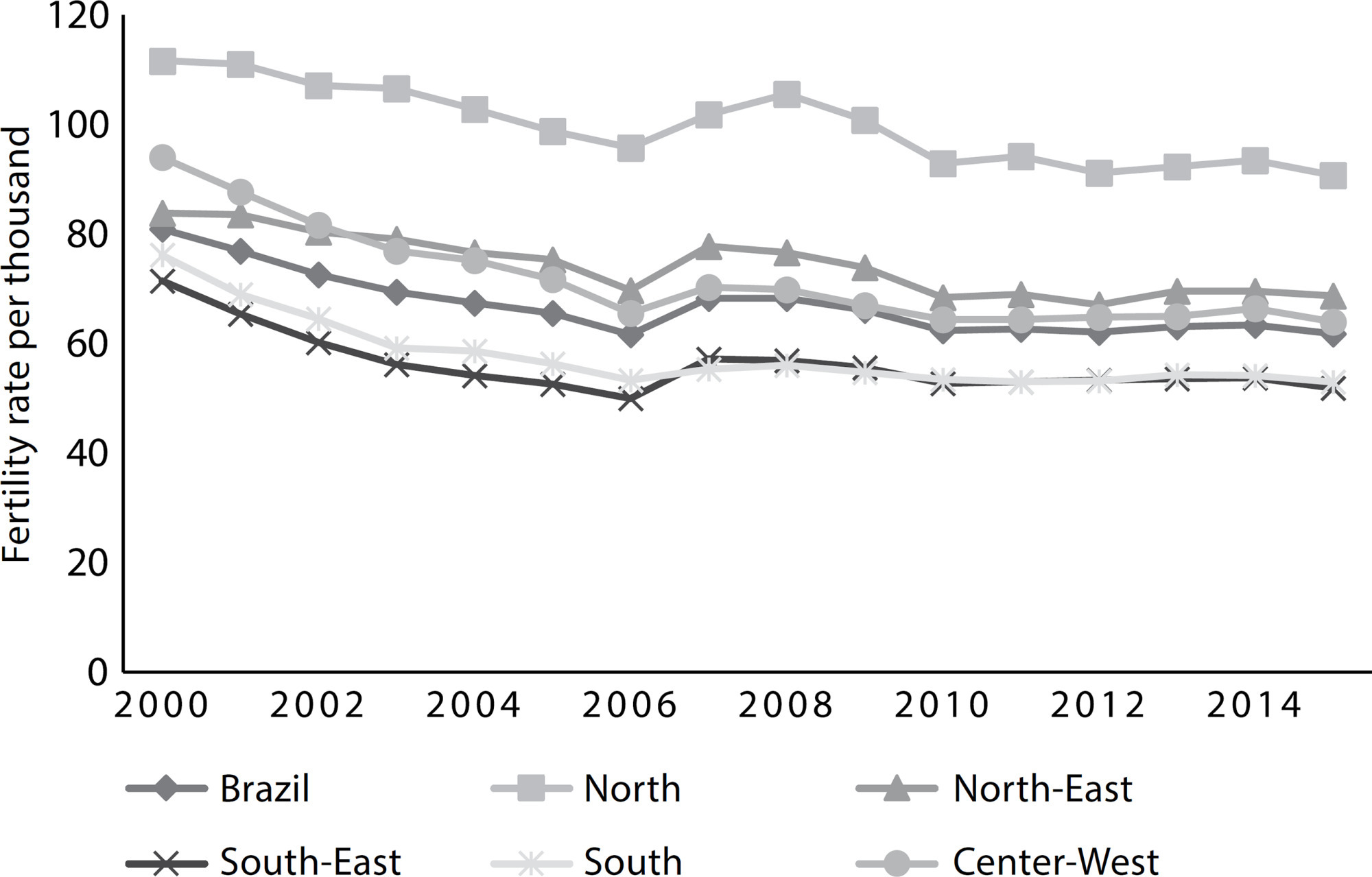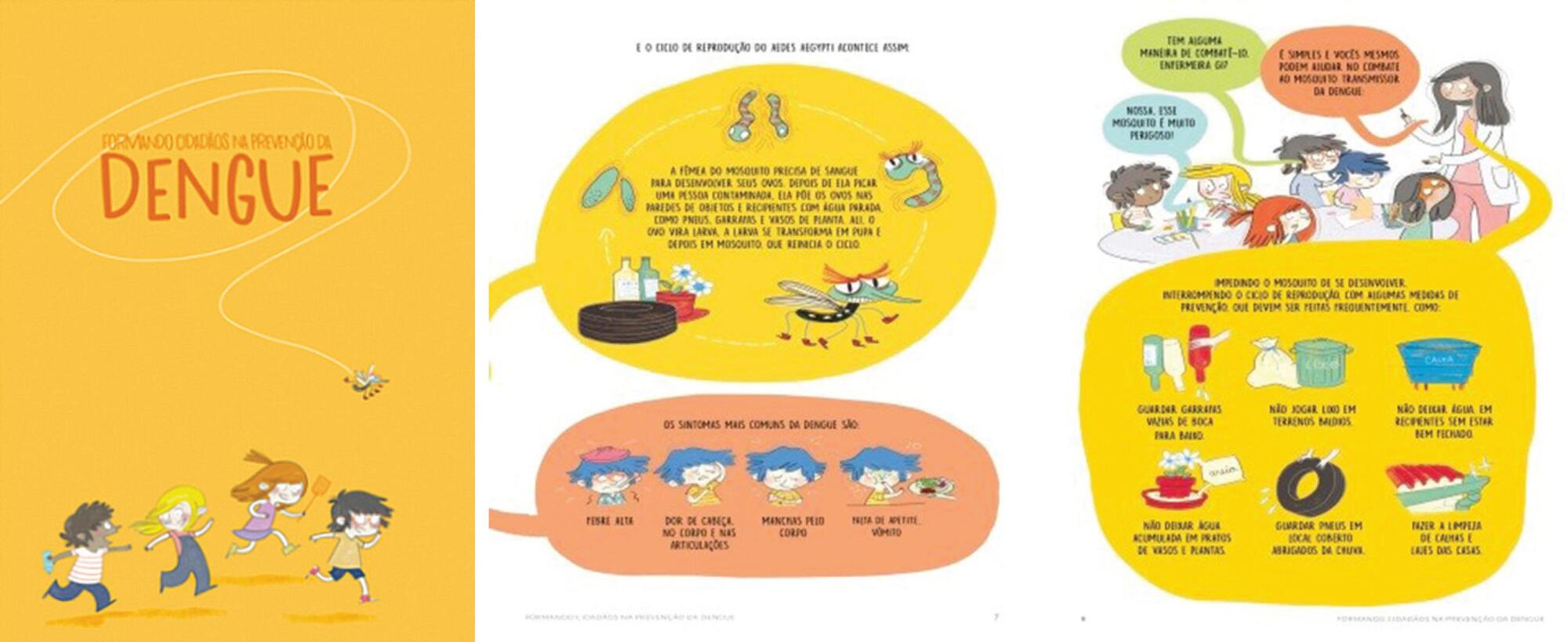-
09/07/2021
Sexuality is associated with the quality of life of the elderly!
Revista Brasileira de Enfermagem. 2021;74:e20201272
Resumen
Sexuality is associated with the quality of life of the elderly!
Revista Brasileira de Enfermagem. 2021;74:e20201272
DOI 10.1590/0034-7167-2020-1272
Visualizações0Ver maisABSTRACT
Objective:
to analyze the association between sexuality and quality of life of Brazilian elderly residents in the community.
Methods:
a cross-sectional study conducted with 477 Brazilian elderly. The data were collected between August and October 2020. We used the EVASI and WHOQOL-OLD (World Health Organization Quality of Life). Data analysis was performed with Mann-Whitney, Spearman and Kruskal-Wallis correlation tests, with Bonferroni post-hoc application when necessary, considering a 95% confidence interval.
Results:
there was a statistical association between all dimensions of sexuality and the general quality of life of the elderly (p<0.05).
Conclusion:
the stimulation of sexuality can be configured as an innovative and holistic strategy focused on the promotion of health and active aging, since this study found the association between sexuality and the general quality of life of elderly people.
-
05/07/2021
Selenium concentrations in elderly people with Alzheimer’s disease: a cross-sectional study with control group
Revista Brasileira de Enfermagem. 2021;74:e20200984
Resumen
Selenium concentrations in elderly people with Alzheimer’s disease: a cross-sectional study with control group
Revista Brasileira de Enfermagem. 2021;74:e20200984
DOI 10.1590/0034-7167-2020-0984
Visualizações0Ver maisABSTRACT
Objective:
To investigate possible differences in plasma and erythrocyte concentrations of selenium among elderly with and without a diagnosis of Alzheimer’s disease (AD).
Methods:
Cross-sectional study, performed with an elderly group with Alzheimer’s disease, diagnosed by a geriatric doctor, and compared to an elderly group without the disease, equaling gender, education, and age. Atomic absorption spectrophotometry determined plasma and erythrocyte concentrations of total selenium (Set).
Results:
The mean age was 74.41±7.1 years in the Alzheimer’s disease group and 71.46±5.1 years among the control group. The Alzheimer’s disease group presented lower plasma concentrations (mean of 45.29±14.51 µg/dL vs. 55.14±14.01 µg/dL; p=0.004), and erythrocyte Set (median of 56.36 µg/L vs. 76.96 µg/L; p<0.001). The logistic regression model indicated an association between erythrocyte Set concentrations and diagnosis of Alzheimer’s disease (p=0.028).
Conclusion:
Elderly with Alzheimer’s disease present lower selenium concentrations in the evaluated organic compartments.

-
ARTÍCULO DE REVISIÓN05/07/2021
Nursing care related to fall prevention among hospitalized elderly people: an integrative review
Revista Brasileira de Enfermagem. 2021;74:e20200904
Resumen
ARTÍCULO DE REVISIÓNNursing care related to fall prevention among hospitalized elderly people: an integrative review
Revista Brasileira de Enfermagem. 2021;74:e20200904
DOI 10.1590/0034-7167-2020-0904
Visualizações0Ver maisABSTRACT
Objective:
to identify scientific productions on nursing care related to fall risk prevention among hospitalized elderly people.
Methods:
an integrative literature review from 2015 to 2019 in the PubMed/MEDLINE, Scopus, Web of Science, LILACS, BDENF, SciELO and CINAHL databases, in Portuguese, English and Spanish. The keywords were elderly, hospitalization, accidents due to falls, nursing care.
Results:
thirty-three publications were analyzed. The synthesis of the studies resulted in the categories: Clinical nursing assessments to prevent falls among hospitalized elderly people; Fall risk factors for elderly people; Fall risk prevention strategies for elderly people.
Final considerations:
it was found that the scientific knowledge produced on nursing care related to fall risk prevention for hospitalized elderly people evidences the clinical assessment, risk factors and strategies such as nursing care, contributing to foster self-care behavior and promotion security for elderly people.

-
05/07/2021
Educational technology for bathing/hygiene of elders at home: contributions to career knowledge
Revista Brasileira de Enfermagem. 2021;74:e20200890
Resumen
Educational technology for bathing/hygiene of elders at home: contributions to career knowledge
Revista Brasileira de Enfermagem. 2021;74:e20200890
DOI 10.1590/0034-7167-2020-0890
Visualizações0Ver maisABSTRACT
Objective:
to build and validate an educational booklet for bathing and hygiene of elders at home.
Methods:
a methodological study, developed through data collection in literature and situational diagnosis, booklet construction, material qualification through validation by expert judges (11 nurses) and target audience (30 caregivers). Data were analyzed descriptively. The minimum content validity index of 0.80 was considered.
Results:
in content and appearance validation, experts assigned Content Validity Index global of 0.92, while for assessment of the material’s suitability, the booklet was classified as “superior”, with an average of 90%. In the validation of caregivers, the overall Content Validity Index was 1.0.
Conclusion:
the booklet was successfully validated and can be considered in the context of health education and collaborate with an adequate and safe practice of bathing and hygiene of elders at home.

-
05/07/2021
Factors associated with urinary tract infection in a Nursing Home
Revista Brasileira de Enfermagem. 2021;74:e20200813
Resumen
Factors associated with urinary tract infection in a Nursing Home
Revista Brasileira de Enfermagem. 2021;74:e20200813
DOI 10.1590/0034-7167-2020-0813
Visualizações1Ver maisABSTRACT
Objective:
to analyze the factors associated with urinary tract infection occurrence in institutionalized elderly.
Methods:
this is a cross-sectional, analytical, quantitative study with 116 elderly people from a Nursing Home. Urinary tract infection diagnosis was carried out through urine culture and clinical assessment. Demographic data and associated factors were obtained from medical records. Statistical analysis included bivariate analysis and logistic regression models.
Results:
the factors associated with urinary tract infection (p<0.05) were being female; wheelchair user; diaper use; diuretic use; urinary and bowel incontinence; type 1 diabetes; benign prostatic hyperplasia; dehydration.
Conclusion:
this study revealed that it is important to consider non-modifiable factors such as sex and clinical comorbidities; however, dehydration, a modifiable factor, increased the chances of developing urinary tract infections by 40 times among institutionalized elderly and demands greater attention from the health team.
-
28/06/2021
Trends in fertility rates, proportion of antenatal consultations and caesarean sections among Brazilian adolescents
Revista Brasileira de Enfermagem. 2021;74:e20200884
Resumen
Trends in fertility rates, proportion of antenatal consultations and caesarean sections among Brazilian adolescents
Revista Brasileira de Enfermagem. 2021;74:e20200884
DOI 10.1590/0034-7167-2020-0884
Visualizações1Ver maisABSTRACT
Objective:
To analyze the temporal trends in the fertility rate, proportion of antenatal consultations and caesarean sections in Brazilian adolescents aged 15 to 19, between 2000 and 2015. Methods: The fertility rate, proportion of prenatal consultations and proportion of routes of birth were calculated using data from DATASUS. The trend analysis was performed using the Prais-Winsten regression model and the annual percentage change.
Results:
There was a trend of reduction of 3.5% per year in the fertility rate among adolescents (p<0.05), in addition to an increasing trend of 6% per year in the proportion of more than six antenatal consultations (p <0.0001) and an increasing trend of 6.8% per year in the proportion of caesarean sections (p<0.0001).
Conclusion:
Despite the decreasing trend in fertility rates among Brazilian adolescents, they remain high. Also noteworthy is the growing trend for caesarean sections, even with improved access to antenatal care.

-
28/06/2021
Validation of an instrument for systematizing nursing care in pediatrics
Revista Brasileira de Enfermagem. 2021;74:e20200222
Resumen
Validation of an instrument for systematizing nursing care in pediatrics
Revista Brasileira de Enfermagem. 2021;74:e20200222
DOI 10.1590/0034-7167-2020-0222
Visualizações0Ver maisABSTRACT
Objective:
to verify the validity of indicators’ content referring to the instrument for data collection in children aged 0 to 5 years hospitalized in a pediatric clinic.
Method:
a cross-sectional methodological study was carried out with 11 experts between January and May 2018. For data collection, the steps for validating the instrument’s content were respected. For data analysis, Content Validity Index and Kappa agreement analysis were used.
Results:
after content analysis, a Content Validity Index of 0.94 and Kappa 0.71 was issued according to the experts’ suggestions 81.9%. Therefore, the instrument was suitable for applicability.
Conclusion:
the instrument proved to be valid in terms of content for pediatric care, contributing significantly to improving care for hospitalized children aged 0 to 5 years.
-
28/06/2021
Individual and contextual variables associated with smoking and alcohol consumption during pregnancy
Revista Brasileira de Enfermagem. 2021;74:e20200804
Resumen
Individual and contextual variables associated with smoking and alcohol consumption during pregnancy
Revista Brasileira de Enfermagem. 2021;74:e20200804
DOI 10.1590/0034-7167-2020-0804
Visualizações1Ver maisABSTRACT
Objective:
to analyze the association between individual characteristics and housing context with smoking and alcohol consumption during pregnancy.
Methods:
a cross-sectional study with a probabilistic sample of 3,580 pregnant women who underwent prenatal care in the Unified Health System in 2019. The outcomes were firsthand, secondhand smoke and alcohol consumption during pregnancy. Individual characteristics and the living environment were used as exploratory variables.
Results:
living in a neighborhood with episodes of violence, without social cohesion and without urban elements that encourage physical activity was associated with smoking. Alcohol consumption during pregnancy was associated with living in environments that do not encourage physical activity. Smoking was also associated with lower income and education.
Conclusions:
individual characteristics and the living environment are associated with smoking, secondhand smoke and alcohol consumption during pregnancy.
-
ARTÍCULO ORIGINAL13/07/2020
A saúde mental da enfermagem no enfrentamento da COVID-19 em um hospital universitário regional
Revista Brasileira de Enfermagem. 2020;73:e20200434
Resumen
ARTÍCULO ORIGINALA saúde mental da enfermagem no enfrentamento da COVID-19 em um hospital universitário regional
Revista Brasileira de Enfermagem. 2020;73:e20200434
DOI 10.1590/0034-7167-2020-0434
Visualizações0Ver maisRESUMO
Objetivo:
identificar a prevalência e fatores associados à ansiedade e depressão em profissionais de enfermagem que atuam no enfrentamento da COVID-19 em hospital universitário.
Métodos:
estudo observacional transversal, com questionário sociodemográfico e Escala de Medida de Ansiedade e Depressão, com 88 profissionais de enfermagem. Os dados foram analisados por meio de frequência absoluta e relativa, utilizando o software Statistical Package for the Social Sciences.
Resultados:
houve prevalência de ansiedade (48,9%) e de depressão (25%). A maioria da amostra foi composta por mulheres, com mais de 40 anos, casadas ou em união estável, de cor branca, com ensino superior ou pós-graduação, com renda superior a R$3.000,00, concursadas, com regime de trabalho de 40 horas semanais e tempo de atuação no hospital de 1 a 5 anos.
Conclusão:
deve-se considerar o impacto na saúde mental da enfermagem acarretado pela COVID-19 e intervir com estratégias de enfrentamento para minimizar o sofrimento dos profissionais.
-
22/04/2020
Thematic content analysis using ATLAS.ti software: Potentialities for researchs in health
Revista Brasileira de Enfermagem. 2020;73(3):e20190250
Resumen
Thematic content analysis using ATLAS.ti software: Potentialities for researchs in health
Revista Brasileira de Enfermagem. 2020;73(3):e20190250
DOI 10.1590/0034-7167-2019-0250
Visualizações0ABSTRACT
Objective:
to describe the most important tools of ATLAS.ti Software and to associate them with the procedures of Thematic Content Analysis.
Method:
It is a theoretical reflection of the Content Analysis phases of Laurence Bardin, associating them with software tools Atlas.ti and showing its usefulness for data analysis in qualitative research.
Results:
historical contextualization and the available resources of Atlas.ti software with presentation of health research involving the phases of thematic content analysis.
Final considerations:
The Atlas.ti software assists in the accomplishment of the thematic content analysis being this promising association in health research.
Palavras-chave: Information ManagementPrimary Health CareQualitative AnalysisQualitative ResearchSoftwareVer mais -
REFLEXIÓN26/10/2020
Nursing education: challenges and perspectives in times of the COVID-19 pandemic
Revista Brasileira de Enfermagem. 2020;73:e20200683
Resumen
REFLEXIÓNNursing education: challenges and perspectives in times of the COVID-19 pandemic
Revista Brasileira de Enfermagem. 2020;73:e20200683
DOI 10.1590/0034-7167-2020-0683
Visualizações0Ver maisABSTRACT
Objective:
To discuss the challenges and perspectives of nursing education in times of the COVID-19 pandemic.
Methods:
Reflection study, with theoretical approach based on national and international publications, allied to the experience of researchers in the area of nursing education.
Results:
Four sections are identified: Nursing education: current affairs and perspectives; Education and technologies in time of pandemic: acceleration, alteration and paralysis; Difference between emergency, intentional and remote teaching; the return to the “new normality”: new structuring axes and legal norms.
Final considerations:
The conclusion is that longstanding challenges have emerged with the pandemic, and the processes of acceleration, change and paralysis have marked education in these times. Moreover, epidemiological, technological and psychological aspects should be more valued in the return to activities.
-
ARTÍCULO ORIGINAL13/11/2020
Determinantes sociais da saúde e infecção por COVID-19 no Brasil: uma análise da epidemia
Revista Brasileira de Enfermagem. 2020;73:e20200673
Resumen
ARTÍCULO ORIGINALDeterminantes sociais da saúde e infecção por COVID-19 no Brasil: uma análise da epidemia
Revista Brasileira de Enfermagem. 2020;73:e20200673
DOI 10.1590/0034-7167-2020-0673
Visualizações0RESUMO
Objetivo:
Analisar a influência de fatores socioeconômicos, demográficos, epidemiológicos e da estrutura do sistema de saúde na evolução da pandemia da COVID-19 no Brasil.
Métodos:
Estudo ecológico com variáveis extraídas de bancos de dados, tendo a incidência e mortalidade por COVID 19 até 23 de agosto de 2020, nos estados brasileiros, como variáveis-resposta. A magnitude das associações foi estimada usando o coeficiente de correlação de Spearman e análise de regressão múltipla.
Resultados:
Nos estados brasileiros, 59,8% da variação da incidência de COVID-19 foi justificada pela desigualdade de renda, maior adensamento domiciliar e maior letalidade. No caso da mortalidade, essas mesmas variáveis explicaram 57,9% das variações encontradas nas Unidades Federativas do país.
Conclusão:
Nossos resultados indicam que fatores socioeconômicos influenciaram a evolução e impacto da COVID-19 no Brasil. Dessa forma, sugerimos ações abrangentes a fim de garantir condições econômicas e o fortalecimento das redes de saúde para populações com vulnerabilidade socioeconômica.
Palavras-chave: Determinantes Sociais da SaúdeEpidemiasEpidemiologiaInfecçõesInfecções por CoronavirusVer mais -
ARTÍCULO ORIGINAL27/02/2020
Prevalência de sintomas e qualidade de vida de pacientes com câncer
Revista Brasileira de Enfermagem. 2020;73(2):e20180287
Resumen
ARTÍCULO ORIGINALPrevalência de sintomas e qualidade de vida de pacientes com câncer
Revista Brasileira de Enfermagem. 2020;73(2):e20180287
DOI 10.1590/0034-7167-2018-0287
Visualizações0RESUMO
Objetivos:
analisar a prevalência de sintomas e sua relação com a qualidade de vida de pacientes com câncer.
Métodos:
estudo transversal com amostra de 107 pacientes avaliados por meio de formulário sociodemográfico, escala hospitalar de ansiedade e depressão (HADS) e escala de qualidade de vida (EORTC-QLQ-C30). O teste de correlação de Pearson foi utilizado para avaliar a relação entre sintomas e a qualidade de vida.
Resultados:
predomínio de pacientes do sexo feminino (56,1%), idade média de 55 anos e escolaridade de 10 anos. Verificou-se fadiga (76,6%), insônia (47,7%), dor (42,1%), perda de apetite (37,4%), ansiedade (31,8%) e depressão (21,5%). Os sintomas de ansiedade e depressão apresentaram correlação negativa com qualidade de vida e correlação positiva com sintomas físicos.
Conclusões:
fadiga, insônia, dor e perda de apetite foram os sintomas mais frequentes e mais intensos. Sintomas de ansiedade e depressão mostraram correlação negativa com qualidade de vida e positiva com sintomas físicos.
Palavras-chave: Avaliação de SintomasEnfermagem OncológicaNeoplasiasQualidade de VidaSinais e SintomasVer mais -
ARTÍCULO ORIGINAL10/08/2020
A Escala de Braden na avaliação do risco para lesão por pressão
Revista Brasileira de Enfermagem. 2020;73(6):e20190413
Resumen
ARTÍCULO ORIGINALA Escala de Braden na avaliação do risco para lesão por pressão
Revista Brasileira de Enfermagem. 2020;73(6):e20190413
DOI 10.1590/0034-7167-2019-0413
Visualizações0RESUMO
Objetivo:
Analisar a aplicabilidade da Escala de Braden a indivíduos internados em Unidade de Terapia Intensiva (UTI) com o diagnóstico de enfermagem “mobilidade do leito prejudicada”, em seu potencial de predição do desenvolvimento de lesão por pressão (LPP).
Métodos:
Estudo transversal, quantitativo, que avaliou, com a Escala de Braden, pacientes internados em uma UTI entre novembro de 2016 e fevereiro de 2017.
Resultados:
A prevalência de lesão por pressão foi 35,8% (24/67), no sexo masculino (58,3%; 14/24), com diagnóstico de acidente vascular encefálico (AVE) isquêmico (51,9%; 12/27) e com acidente vascular encefálico hemorrágico (7,4%; 2/27). Dentre os pacientes classificados com risco muito alto de desenvolver lesão por pressão, 83,3% (20/53) a desenvolveram e 76,7% (33/53) não a desenvolveram.
Conclusão:
O desempenho da Escala de Braden apresentou equilíbrio entre sensibilidade e especificidade, mostrando-se melhor instrumento preditivo de risco nessa clientela.
Palavras-chave: Assistência Integral à SaúdeAvaliação em EnfermagemCuidados CríticosCuidados de EnfermagemDiagnósticos de EnfermagemVer mais -
ARTÍCULO DE REVISIÓN24/03/2021
Strategies of active learning methodologies in nursing education: an integrative literature review
Revista Brasileira de Enfermagem. 2021;74(1):e20200130
Resumen
ARTÍCULO DE REVISIÓNStrategies of active learning methodologies in nursing education: an integrative literature review
Revista Brasileira de Enfermagem. 2021;74(1):e20200130
DOI 10.1590/0034-7167-2020-0130
Visualizações0Ver maisABSTRACT
Objectives:
to analyze the scientific evidence on the strategies of active learning methodologies used in the training of nurses, as well as their contributions and obstacles in training.
Methods:
integrative literature review conducted with 33 selected articles in the Medical Literature Analysis and Retrieval System Online, Latin American and Caribbean Literature in Health Sciences, Nursing Database, Scopus, Web of Science and Education Resources Information Center databases.
Results:
among the strategies, simulation, problem-based learning and flipped classroom were highlighted. The active search, the integration of theory and practice and group work were examples of contributions to the training of nurses. However, the lack of preparation of the actors and the lack of structural support contribute to the dissatisfaction of the students.
Final Considerations:
the active learning methodology places the student at the heart of the learning process, favors critical thinking and the ability to make decisions.
-
ARTÍCULO ORIGINAL16/09/2019
Validação de cartilha educativa: uma tecnologia educacional na prevenção da dengue
Revista Brasileira de Enfermagem. 2019;72(5):1318-1325
Resumen
ARTÍCULO ORIGINALValidação de cartilha educativa: uma tecnologia educacional na prevenção da dengue
Revista Brasileira de Enfermagem. 2019;72(5):1318-1325
DOI 10.1590/0034-7167-2018-0771
Visualizações1Ver maisRESUMO
Objetivo:
validar uma cartilha sobre prevenção da dengue, a fim de torná-la uma tecnologia educacional para ser utilizada com a população.
Método:
estudo metodológico, realizado com dois grupos de juízes especialistas da Saúde e de outras áreas. Para a análise dos dados, foi realizado o cálculo de Índice de Validade de Conteúdo.
Resultados:
a cartilha, em geral, foi considerada válida pelos juízes especialistas, visto que obteve um IVC global de 70%. Entretanto, passou por uma reelaboração textual e estética. As alterações recaíram sobre a substituição de expressões, frases, acréscimo de informações e adequação de linguagem. As ilustrações foram refeitas, acrescentando clareza, expressividade, movimento, interação e contextualização.
Conclusão:
a cartilha é válida a ser utilizada para a população, com o objetivo de informar, de maneira lúdica, as formas de prevenção e combate ao mosquito transmissor da dengue.

Búsqueda
Buscar en:
Nuvem de Tags
Adolescente (85) Atenção Primária à Saúde (239) COVID-19 (91) Criança (91) Cuidados de Enfermagem (269) Educação em Enfermagem (151) Educação em Saúde (139) Enfermagem (930) Enfermagem Pediátrica (86) Estudantes de Enfermagem (77) Estudos de Validação (131) Família (87) Idoso (208) Promoção da Saúde (99) Qualidade de Vida (104) Saúde do Trabalhador (86) Saúde Mental (145) Saúde Pública (82) Segurança do Paciente (150) Tecnologia Educacional (100)



